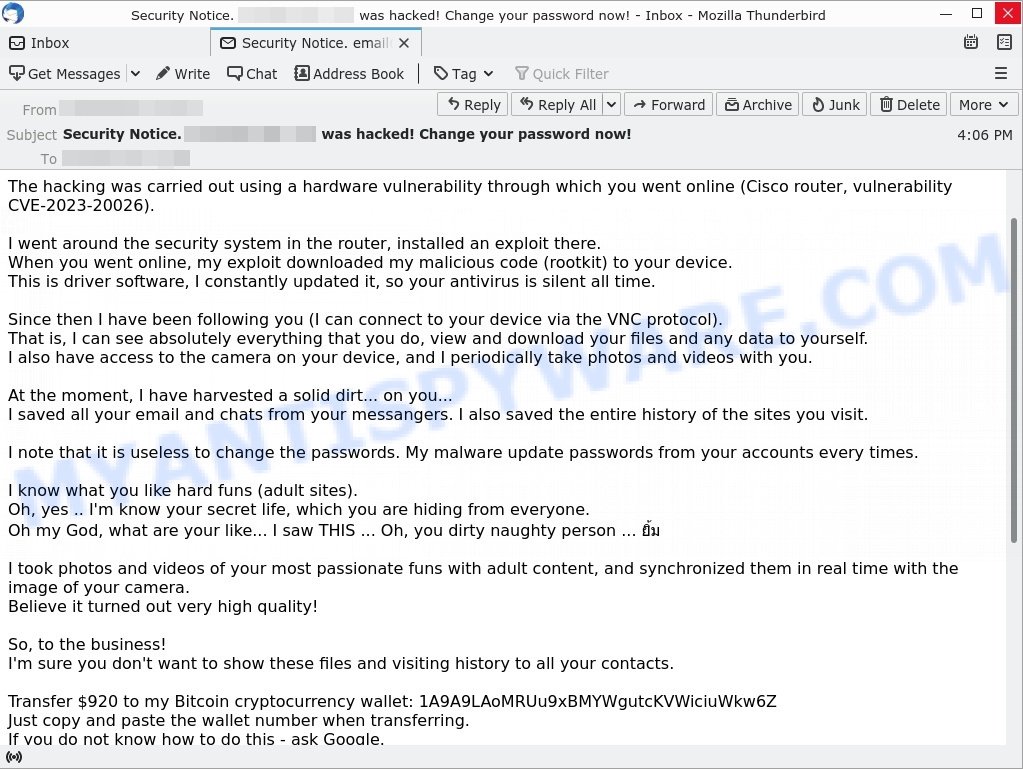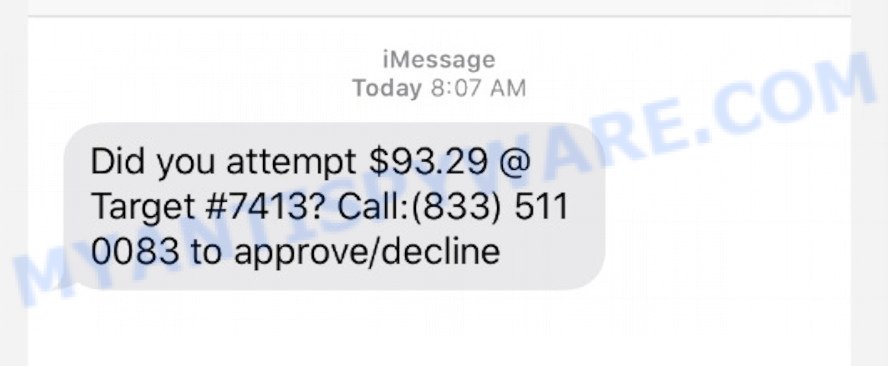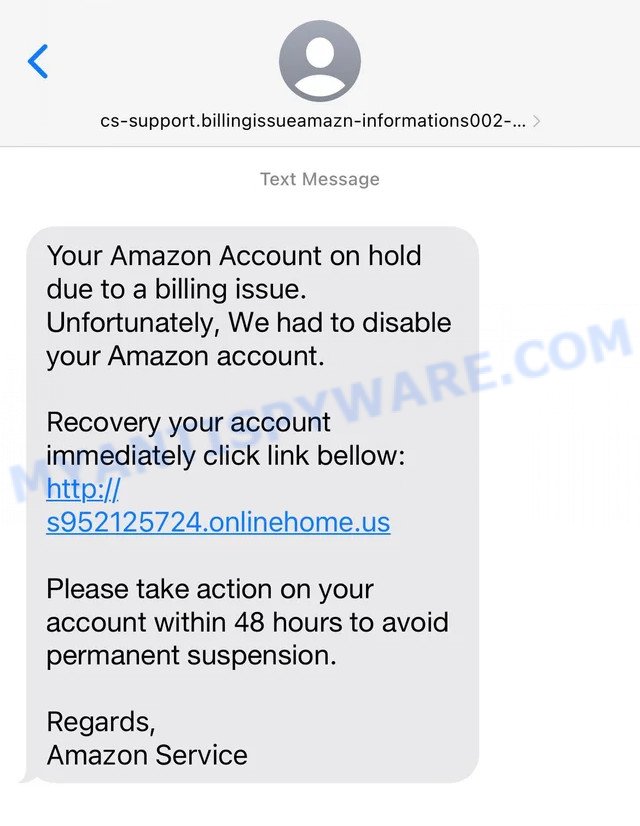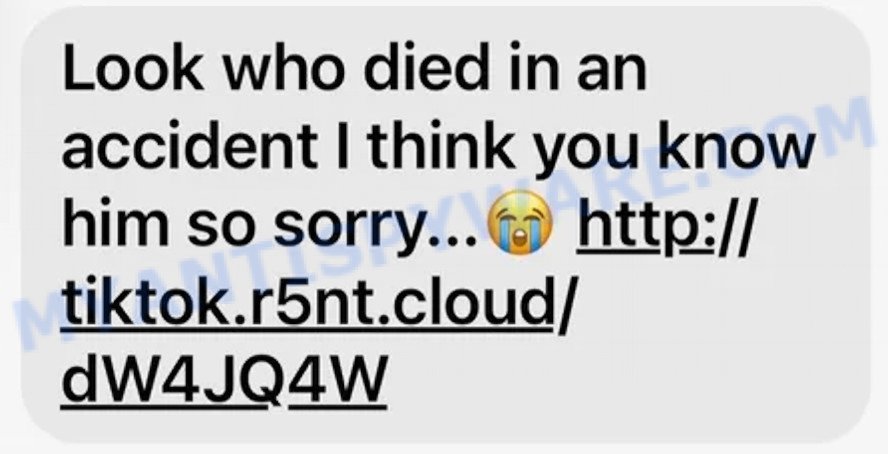Beware of a new scam targeting Wells Fargo customers, in which fraudsters are impersonating the bank to trick victims into divulging their personal and financial information. The scam involves sending unsolicited text messages or making phone calls claiming to be from Wells Fargo and informing the recipient of a “New Transaction” of $79.73 that requires immediate action.
The message further instructs the recipient to contact a specific phone number (844-646-0667) to approve or decline the transaction, which is often described as being on hold. However, the phone number provided is controlled by the scammers, who will then use a variety of tactics to try and trick victims into divulging their personal and financial information.
This scam is particularly dangerous as it uses urgency and fear tactics to create a sense of panic and urgency in the victim, which can lead them to make hasty decisions and divulge sensitive information. In this article, we’ll explore the tactics used by these scammers, how to spot the signs of a scam, and what to do if you receive a suspicious message or call claiming to be from Wells Fargo.
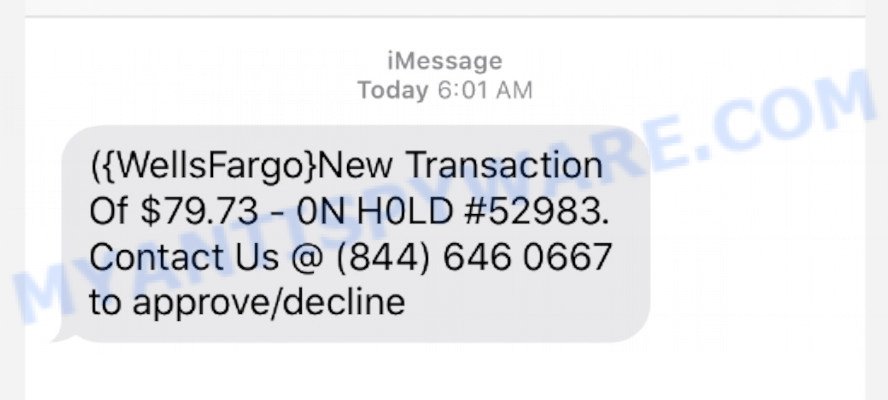
QUICK LINKS
- Wells Fargo New Transaction Scam Explained
- How the scam works
- Here are 5 tips on How to Spot Such Scams
- What to do when you receive a scam text?
- Report a Scam
Wells Fargo New Transaction Scam Explained
This is a fraudulent scheme that targets customers of Wells Fargo Bank, one of the largest banks in the United States. The scam involves sending unsolicited text messages or making phone calls to bank customers claiming to be from Wells Fargo.
A typical Wells Fargo New Transaction Scam Text reads as follows:
({WellsFargo}New Transaction Of $79.73 – 0N H0LD #52983. Contact Us @ (844) 646 0667 to approve/decline
The message informs the recipient of a new transaction of $79.73 that requires immediate action. It further instructs the recipient to contact a specific phone number (844-646-0667) to approve or decline the transaction, which is often described as being on hold.
However, the phone number provided is controlled by the scammers, who will then use a variety of tactics to try and trick victims into divulging their personal and financial information, such as their bank account number, Social Security number, and login credentials.
The scammers use urgency and fear tactics to create a sense of panic and urgency in the victim, which can lead them to make hasty decisions and divulge sensitive information. In reality, there is no new transaction and the message is a complete fabrication designed to trick the victim into revealing their personal and financial information to the scammers. If you receive a suspicious message or call claiming to be from Wells Fargo, it’s best to hang up and contact the bank directly to verify the legitimacy of the message.
Here are the typical steps involved in the Wells Fargo New Transaction scam
- The scammer sends an unsolicited text message or makes a phone call to a Wells Fargo customer. The message may appear to be from Wells Fargo, or the scammer may pretend to be a representative of the bank.
- The message informs the recipient of a new transaction of $79.73 that requires immediate attention. The message may also state that the transaction is on hold or needs approval.
- The message instructs the recipient to contact a specific phone number (844-646-0667) to approve or decline the transaction.
- When the victim calls the phone number provided, they will be prompted to provide their bank account number, Social Security number, login credentials, or other personal and financial information.
- The scammer uses the information collected to steal the victim’s identity, make fraudulent transactions, or sell the information to other criminals on the dark web.
It’s important to note that the scammers may use different variations of this scam to target Wells Fargo customers, but the goal is always the same: to trick the victim into providing sensitive information that can be used for fraudulent purposes. To avoid falling for this scam, it’s best to verify any suspicious message or call with the bank directly and never provide sensitive information to anyone unless you are certain of their identity and legitimacy.
Here are 5 tips on How to Spot Such Scams
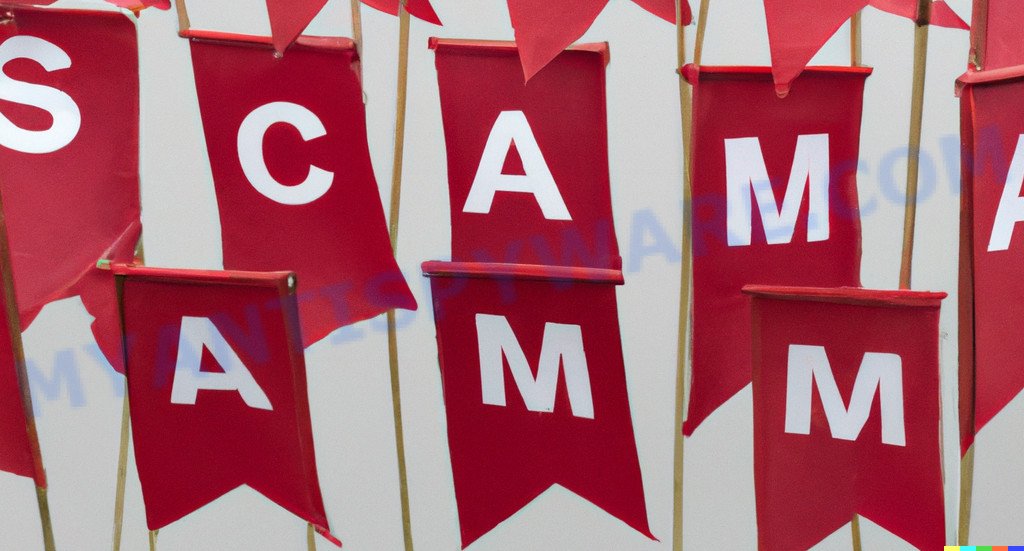
To spot scams like the Wells Fargo text message scam, here are some tips to keep in mind:
1. Be cautious of unexpected or unsolicited messages
Scammers often use unsolicited messages or calls to trick their victims. Be wary of messages or calls that claim to be from a bank or other financial institution, especially if you did not initiate the contact.
2. Check the sender’s information
Scammers often use fake or misleading information to make their messages appear legitimate. Check the sender’s information, including the phone number or email address, to see if it matches the official contact information for the bank or financial institution.
3. Look for spelling and grammatical errors
Many scam messages contain spelling and grammatical errors. This is often a red flag that the message is not legitimate.
4. Don’t give out personal or financial information
Banks and financial institutions will never ask for personal or financial information over the phone or via text message. If you are unsure if a message is legitimate, contact the bank or financial institution directly using the official contact information on their website or on the back of your credit or debit card.
5. Trust your instincts
If a message or call seems suspicious or too good to be true, trust your instincts and don’t provide any personal or financial information. It’s always better to err on the side of caution and protect your sensitive information.
Examples of such scams
The Wells Fargo New Transaction Scam is just one of the many types of scams that exist. In some emails and text messages, scammers use threats to intimidate and bully a victim into paying, others contain links to malicious files. Onlinehome.us Scam, Amazon Account Locked Scam – Failed Login Attempts Text Message, Approve/Decline Wells Fargo Scam and Amazon Account On Hold Due to a Billing Issue Scam are some of the scams we reported recently.
- Onekcash.com Beast Promo $1000 Scam
- I am a spyware software developer Email Scam
- Amazon Account On Hold Due to Billing Issue Scam Email
- Look Who Died Scam Facebook Message
What to do when you receive a scam text message like the Wells Fargo New Transaction Scam Text
If you receive a scam text message like the Wells Fargo New Transaction text message scam, here’s what you should do:
- If you receive a message from a company or financial institution, verify the message by calling the official customer support number or logging into your account online. Do not use the phone number provided in the message as it may be fake.
- Do not respond to the message or call the phone number provided. The scammers may use your response to further scam you or use your contact information for future scams.
- Block the phone number on your phone so you don’t receive any further messages from the scammer.
- Report the scam to Wells Fargo (1-800-956-4442) and to the Federal Trade Commission (1-877-FTC-HELP) at https://ftc.gov/. This can help authorities track and investigate the scammer.
- Keep an eye on your bank and credit card accounts for any unauthorized transactions or suspicious activity. If you notice any suspicious activity, contact your bank or financial institution immediately. Use the steps (https://consumer.ftc.gov/articles/what-do-if-you-were-scammed) to try to stop a transaction, get a transaction reversed, or get a refund.
- Share your experience with family and friends to help them recognize and avoid similar scams.
- Use reputable anti-spyware and anti-malware software to protect your computer and mobile devices from malware and other online threats.
- Stay up-to-date on the latest scam and fraud tactics by regularly reading news articles and updates from trusted sources. This can help you recognize and avoid scams before they have a chance to impact you.
Remember, the best defense against scams is to stay informed and be vigilant. Stay aware of the latest scams and fraud tactics and protect your personal and financial information.
Threat Summary
| Name | Wells Fargo New Transaction Scam Text |
| Type | Scam, Phishing, Social Engineering |
| Fake Claims | New Transaction Of $79.73 – 0N H0LD #52983 |
| Scammers’ Phone Numbers | (844) 646 0667, 8446460667 |
| Damage | Identity Theft, Financial Loss |
| Distribution methods | Text Messages, Phone Calls, Email |
| Target Audience | Wells Fargo Customers |
| Prevention Tips | Verify messages and calls with the bank directly, never provide personal information to unknown callers |
| Reporting Info | Report to Wells Fargo’s fraud department at 1-800-956-4442, the Federal Trade Commission at 1-877-FTC-HELP, and local law enforcement. |
Report a Scam
If you have received the Wells Fargo New Transaction Scam Text or a fake Wells Fargo message that is similar but not the same as the example above, then post it as comment on this article. Please include the telephone number the text came from. This helps us to warn users about current scams, monitor trends and disrupt scams where possible.

